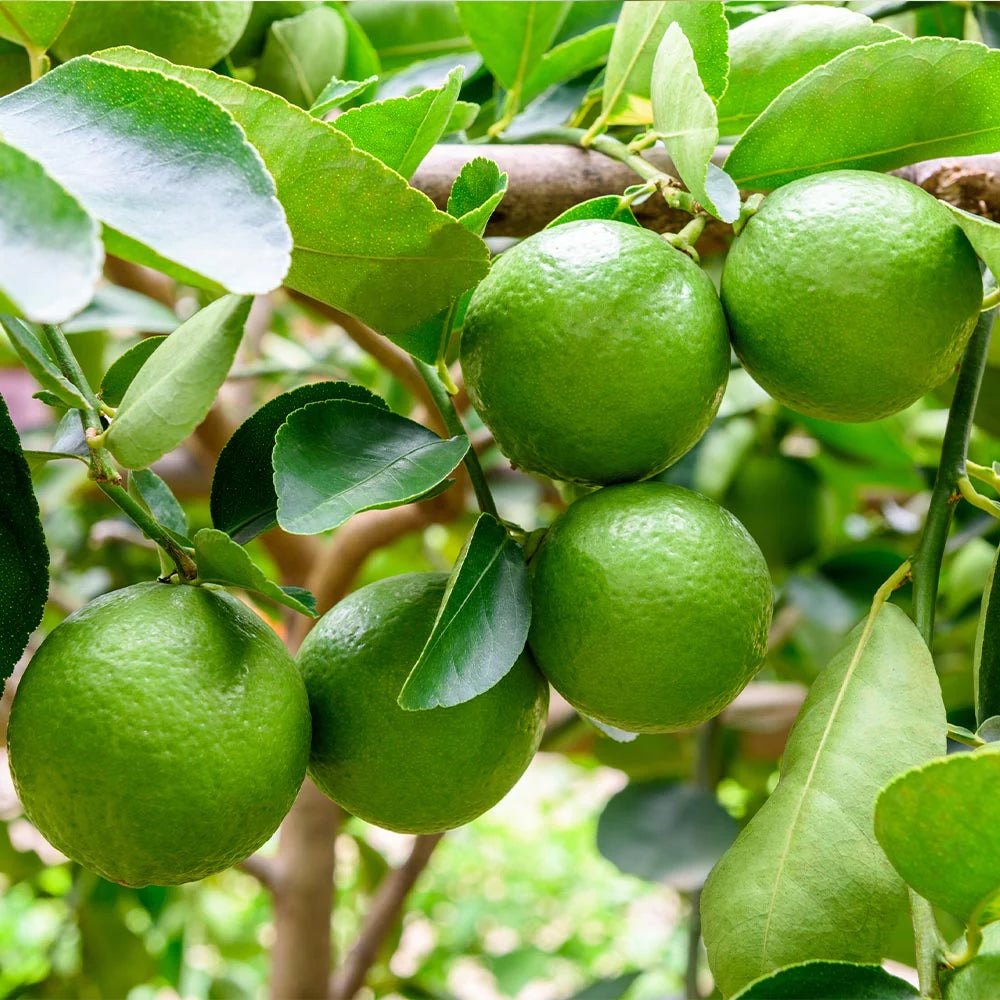
The Juicy and Flavorful Citrus Delight !
When it comes to citrus fruits bursting with tangy flavor, one cannot overlook the delightful Persian lime. Known for its remarkable juiciness and generous size, Persian limes have gained popularity worldwide. Have you ever wondered why they are called "Persian" and what sets them apart from other citrus fruits? Join us as we explore the intriguing story behind Persian limes and learn why they are cherished for their juicy goodness.
Origin and Naming:
Contrary to what their name suggests, Persian limes did not originate from Persia (modern-day Iran). Instead, they are believed to have their roots in Southeast Asia, particularly Indonesia and Malaysia. Their journey to Persia and subsequent introduction to the Western world led to the name "Persian lime."
In the 15th century, Persian traders brought these limes to Persia from the East, where they thrived in the warm climate. During the time of the Islamic Empire, Persian limes spread throughout the Arabian Peninsula and were eventually introduced to the Americas by the Spanish and Portuguese explorers. Due to their early association with Persia and popularity in the region, they acquired the name "Persian limes."
Distinctive Qualities:
One of the most notable characteristics of Persian limes is their remarkable juiciness. They have a high juice content, making them a preferred choice for culinary and beverage applications, from adding zest to dishes to creating refreshing beverages like limeades and margaritas.
The size of Persian limes is another appealing feature. They tend to be larger than other lime varieties, which means more juice for your recipes or drinks. Their ample size makes them easier to handle and extract juice from, adding convenience to the culinary experience.
Why So Juicy and Big?
The juiciness and size of Persian limes can be attributed to various factors, including climate, cultivation techniques, and genetics.
1. Climate: Persian limes thrive in tropical and subtropical regions with the right balance of sun, warmth, and humidity. The abundance of sunshine and extended growing seasons, especially in regions like Mexico and Florida, contribute to their juicy and flavorful nature.
2. Cultivation Techniques: Skilled farmers employ various cultivation techniques to enhance the fruit's quality and size. Proper irrigation, nutrient-rich soil, and careful pest and disease management all play a role in fostering healthy and robust Persian lime trees, resulting in juicy and luscious fruits.
3. Genetics: The genetic makeup of Persian lime trees also influences the fruit's characteristics. Breeders and horticulturists have selectively propagated plants with desirable traits, such as juiciness and size, resulting in improved cultivars over time.
The Versatile Delight:
Beyond their juiciness and size, Persian limes are renowned for their bright green color, vibrant aroma, and refreshing taste. They add zing to a variety of dishes, from savory Mexican cuisine to tangy salad dressings and desserts. Their acidic yet sweet flavor profile balances well with savory and sweet ingredients, making them a versatile staple in the culinary world.
In addition to their culinary applications, Persian limes have gained popularity in mixology, as they form the base for classic cocktails such as the refreshing lime and soda, zesty mojitos, and tropical margaritas.
Conclusion:
Persian limes, despite their misleading name, have become synonymous with lusciousness and juiciness. Their journey from Southeast Asia to Persia and eventually the Western world has established them as a beloved citrus fruit globally. The combination of their tropical origins, cultivation techniques, and genetic makeup contributes to their irresistible qualities. So, the next time you enjoy a zesty limeade or savor the tanginess of a lime-infused dish, remember the fascinating story behind the juicy delight that is the Persian lime.
